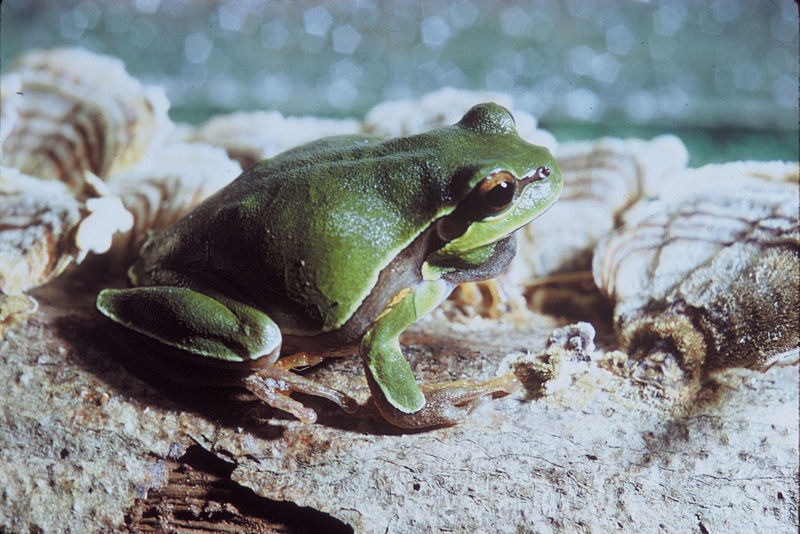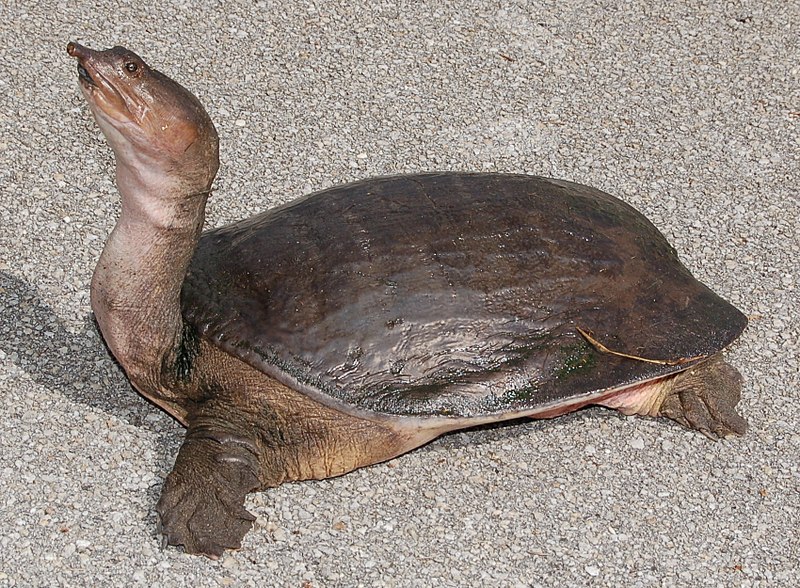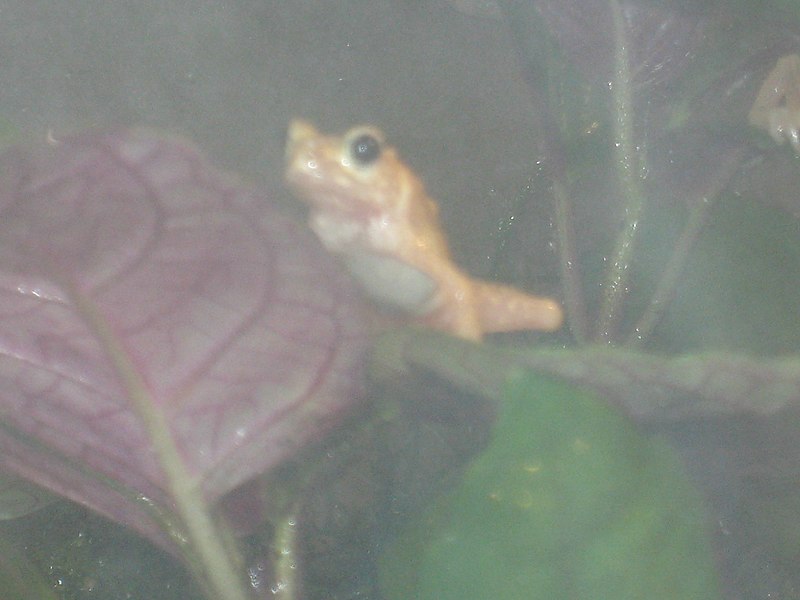The world’s 24 species of Softshell Turtles (Family Trionychidae) depart radically from the typical turtle body plan, and their behavior holds many surprises for those familiar with “normal” turtles. In Part 1 of this article we looked at their natural history and diet, and discussed the basics of captive care. I also relayed some of the difficulties inherent in working with these delicate creatures – difficulties that resulted in the loss of some huge and rare individuals of several species. I hope you enjoy the following Softshell observations and stories. Read More »
Category Archives: Conservation
Feed SubscriptionConservation Update – The Bizarre, Skin-Breathing Lake Titicaca Frog
The huge, aquatic, baggy-skinned Lake Titicaca Frog (Telmatobius culeus) has fascinated me since childhood, when I first came upon a group at the Bronx Zoo. I returned again and again to stare as the unusual beasts – largest of the world’s aquatic frogs – did “push-ups” at the bottom of their cold aquarium (they breathe largely through their loose skin, and rock back and forth in order to increase the area exposed to the water). Because the frogs lived for so long – nearly 30 years in one case – I was able to work with same individuals I had earlier observed once I began my zoo-keeping career. Read More »
Pet Industry Responds to Amphibian Crisis and Proposed Trade Restrictions
 In terms of the number of species and countries affected, Batrachochytrium dendrobatidis (“Chytrid fungus” or Bd, for short) is the most devastating wildlife disease ever identified. It is currently sweeping through frog and salamander populations worldwide, and is responsible for the decline or extinction of at least 250 species!
In terms of the number of species and countries affected, Batrachochytrium dendrobatidis (“Chytrid fungus” or Bd, for short) is the most devastating wildlife disease ever identified. It is currently sweeping through frog and salamander populations worldwide, and is responsible for the decline or extinction of at least 250 species!
Your Comments Needed
Concerns that the transportation of live frogs, salamanders and frog legs is aiding the spread of both Bd and another deadly disease, Ranavirus (please see the article below), prompted the US federal government to propose new regulations that could limit the trade in most amphibians.
Notice of these regulations is now posted in the Federal Register. Interested persons and organizations, both professional and amateur, are invited to comment. Commenting is easy…simply click here and you will be taken to a form that can be used to register your opinions.
The comment period closes on Thursday, December 16, 2010.
The Pet Industry Weighs-In

PIJAC representatives also attended a major conference on the subject, and are now involved in cooperative programs with over 200 zoos, aquariums, private amphibian keepers, government agencies and universities. You can read more about theses efforts here.
Bd and its fallout is the most important issue facing amphibians and those who care about their future. Please, make no mistake, this is a full-blown crisis. Please consider reading the following articles and becoming involved…I’ll be happy to assist in any way possible.
Further Reading
US Government Seeks Comments on Amphibian Trade Restrictions
Disease and Amphibians in the Fish Bait Trade
Successful Bd Treatments
Amphibian Ark Bd Update on the federal proposal
Edible Frog in Estonia image referenced from wikipedia and originally posted by Elina Annusver
The Natural History and Captive Care of the Softshell Turtles – Part 1
 Softshell Turtles caught my attention early and remain great favorites of mine all these years (decades!) later. I’ve had a long history with the group – I raised Smooth Softshell hatchlings as a child, dove with huge Florida Softshells in southern canals and was eventually lucky enough to work with the immense Narrow-Headed and Bibron’s Giant Softshells. Today I’d like to introduce this most unique turtle family. Read More »
Softshell Turtles caught my attention early and remain great favorites of mine all these years (decades!) later. I’ve had a long history with the group – I raised Smooth Softshell hatchlings as a child, dove with huge Florida Softshells in southern canals and was eventually lucky enough to work with the immense Narrow-Headed and Bibron’s Giant Softshells. Today I’d like to introduce this most unique turtle family. Read More »
Kihansi Spray Toads, Extinct in the Wild, Return to Africa

In the year 2000 I had the good fortune to work with the world’s sole surviving group of Kihansi Spray Toads (Nectophrynoides asperginis). Last seen in the wild in 2004, and declared extinct in nature soon after, the 499 individuals sent to the Bronx and Toledo Zoos represented the species’ last chance. Recently (August, 2010), I received the pleasant news that a group was sent back to Tanzania for possible reintroduction. Read More »
 That Reptile Blog – Reptile, Amphibian and Exotic Pet Care and Information
That Reptile Blog – Reptile, Amphibian and Exotic Pet Care and Information
